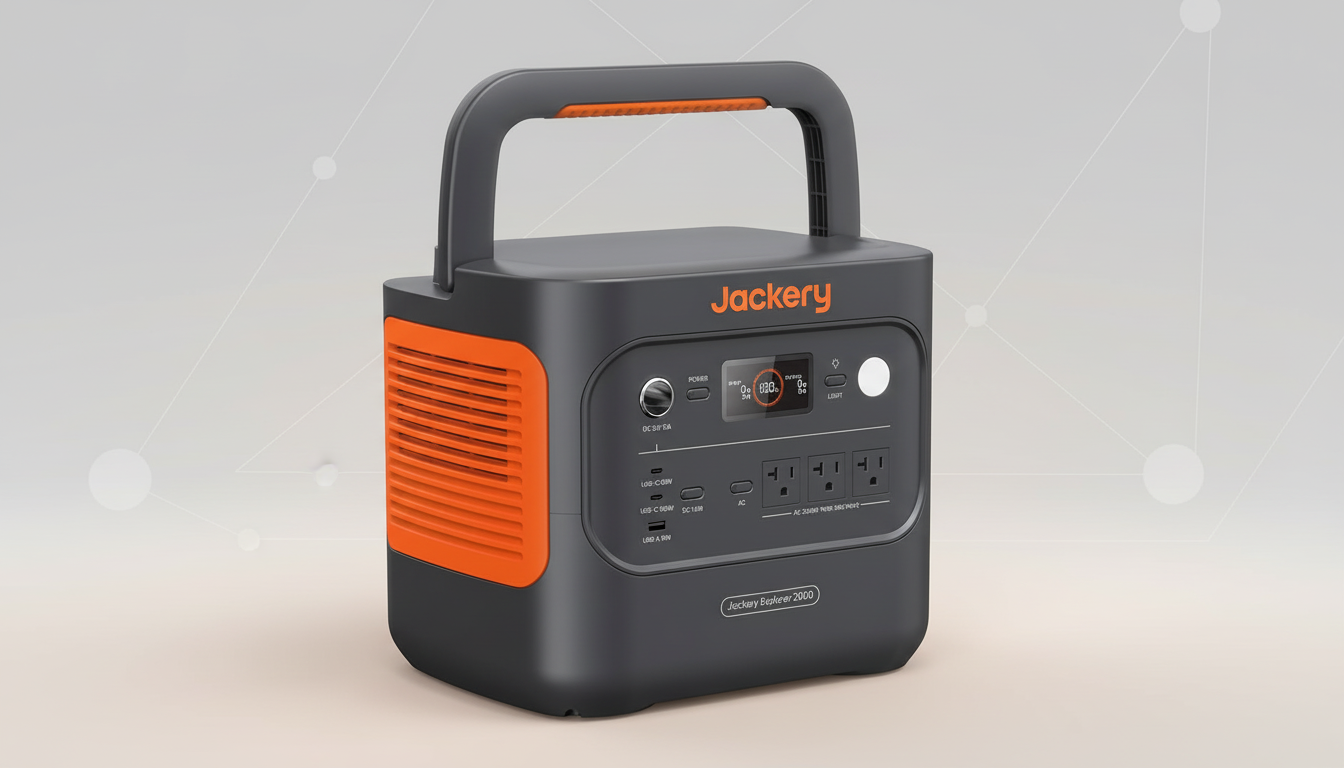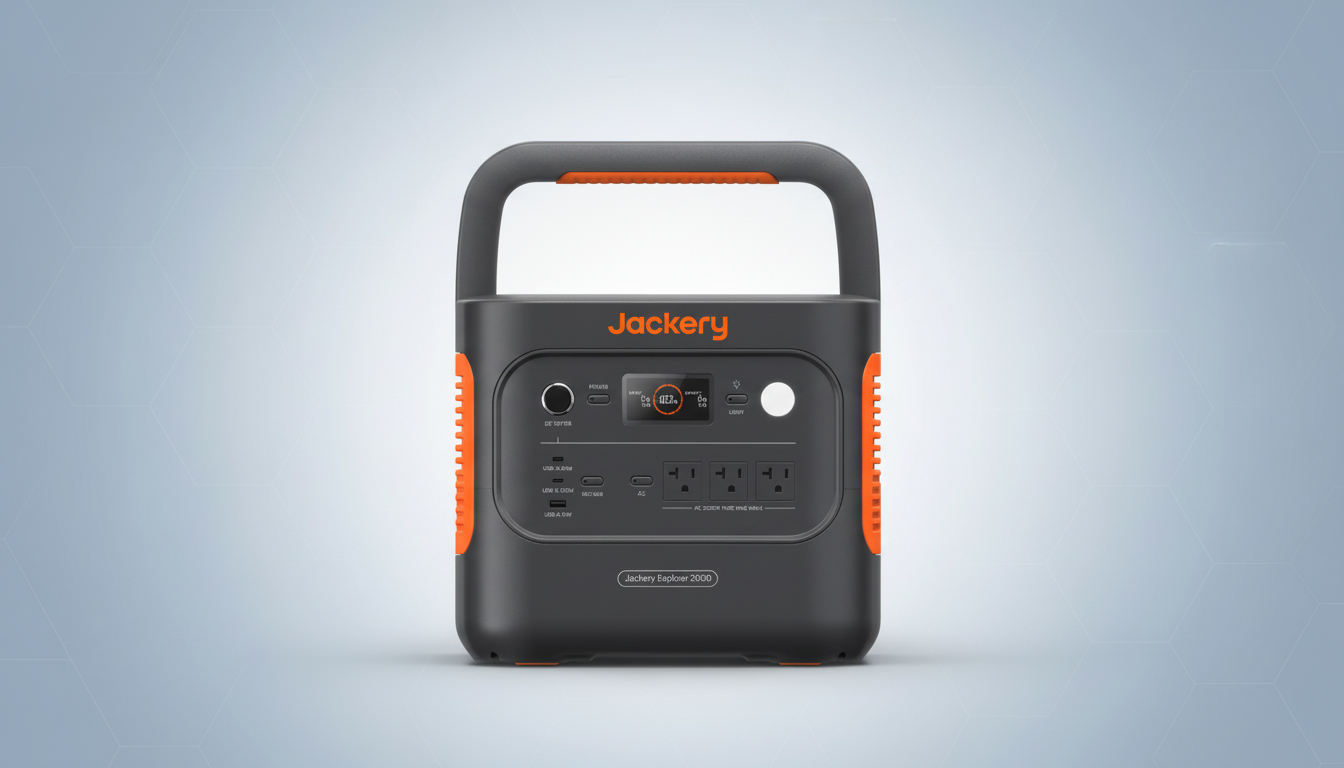Amazon is rolling out steep markdowns on Jackery portable power stations, cutting prices by as much as 47%. For households prepping for outages and campers chasing silent, fume-free power, the timing is hard to ignore. With weather-driven grid disruptions climbing in recent years, as documented by the U.S. Energy Information Administration, battery backups have shifted from nice-to-have to practical insurance.
Jackery sits near the top of Amazon’s portable power best-sellers thanks to reliable inverters, straightforward interfaces, and bundles that pair batteries with solar panels. Below are the standout offers, plus expert tips to help you choose the right capacity and lock in the best value.

Best Jackery Portable Power Deals Live at Amazon
- Jackery Explorer 2000 v2 drops to $799, a $700 cut that represents the headline 47% discount. With roughly 2,042Wh on tap and a high-output inverter, it can keep essentials running during an outage and still travel for tailgates or RV trips. Expect enough energy for a fridge, lights, and device charging without the noise or fumes of a gas generator.
- Jackery Explorer 300 is down to $169, saving $90. This compact 293Wh unit is a solid everyday carry for road trips, photographers, and remote work setups. It’s not a whole-home backup, but it handles phones, tablets, cameras, routers, and small DC devices with ease.
- Jackery Explorer 1000 v2 bundled with a 100W solar panel is available for about $608.42 after an on-page coupon, trimming roughly $440. With around 1,070Wh and multiple AC and USB ports, this is the sweet spot for weekend camping or maintaining a work-from-home stack during brief outages. The panel lets you recharge off-grid and stretch runtime indefinitely with sunshine.
- More notable cuts include the Explorer 500 for about $298.95 (save ~$200), the Solar Generator 1000 v2 with two 100W panels at $699 (save $600), and the Explorer 2000 v2 with a 16-foot extension cable for $819 (save $720). Bigger builds get deep trims too: the Explorer 2000 with two 100W panels for $1,099 (save $1,000) and the Solar Generator 2000 Plus with two 200W panels at $1,499 (save $1,800). Select 3000-class kits also see triple-digit savings on both standalone units and panel bundles.
As with most Amazon promotions, prices and coupon amounts can move quickly. Check the product page for clipped coupons before checkout to secure the lowest numbers.
What the key portable power station specs actually mean
Capacity, measured in watt-hours (Wh), tells you how much energy the battery stores. A 2,000Wh unit can theoretically deliver 2,000 watts for one hour or 200 watts for about 10 hours, minus inverter losses. Inverter output, measured in watts (W), indicates what devices you can run at once. Coffee makers and microwaves often need 800 to 1,200W; full-size fridges can surge much higher at startup.
Battery chemistry impacts longevity. Many newer “Plus” lines across the industry use lithium iron phosphate (LFP) for longer cycle life, while some older models rely on NMC cells for higher energy density. If you plan to cycle the pack frequently, look for manufacturer-rated cycle counts and warranty terms. Safety certifications from organizations like UL are also worth prioritizing.
Solar input and charge speed matter for off-grid use. National Renewable Energy Laboratory data shows that real-world solar yield varies with latitude, season, and shade. Two 100W panels won’t consistently deliver 200W; plan conservatively and add panels if you need faster recovery between uses.
Real-world runtime snapshots for common home and travel use
For a typical refrigerator averaging 100 to 200W while cycling, a ~2,042Wh Explorer 2000 v2 can cover roughly a day of intermittent operation, especially if you minimize door openings. A CPAP drawing around 40W with humidifier off can run through the night on an Explorer 300 and much longer on mid-range packs.

Home internet equipment tends to sip power; a modem and router together can hover near 20 to 25W, allowing a 500Wh unit to keep you online for a long workday. Laptops vary widely, but many ultrabooks sit near 60W under load, making the Explorer 1000 v2 a reliable desk-side UPS alternative during short outages.
For power tools and kitchen appliances with higher draw, match the inverter rating, not just capacity. If your device needs 1,200W continuous with a higher surge, aim for a 1,500W to 2,000W inverter class to prevent overloads.
Buying tips to maximize these Jackery discounts and value
Bundles often deliver the lowest cost per watt-hour. If you’ll eventually add solar, getting panels in the initial purchase may save more than buying piecemeal later. For emergency planning, emergency managers recommend at least 72 hours of self-sufficiency; size your battery to cover your essentials for that window and add panels to extend it.
Clip every available on-page coupon and double-check the final price in cart. Amazon’s dynamic pricing means discounts can stack unexpectedly, but they can also disappear quickly. Review return policies and manufacturer warranties, and consider whether features like pass-through charging, app monitoring, or expandability justify a step up.
With outages becoming more frequent, as shown by recent federal reliability metrics and the rise in billion-dollar weather events noted by NOAA, a portable power station is no longer a niche tool. If you’ve been waiting for the right moment, the current Jackery cuts at Amazon deliver rare value across entry-level, mid-range, and high-capacity kits.

